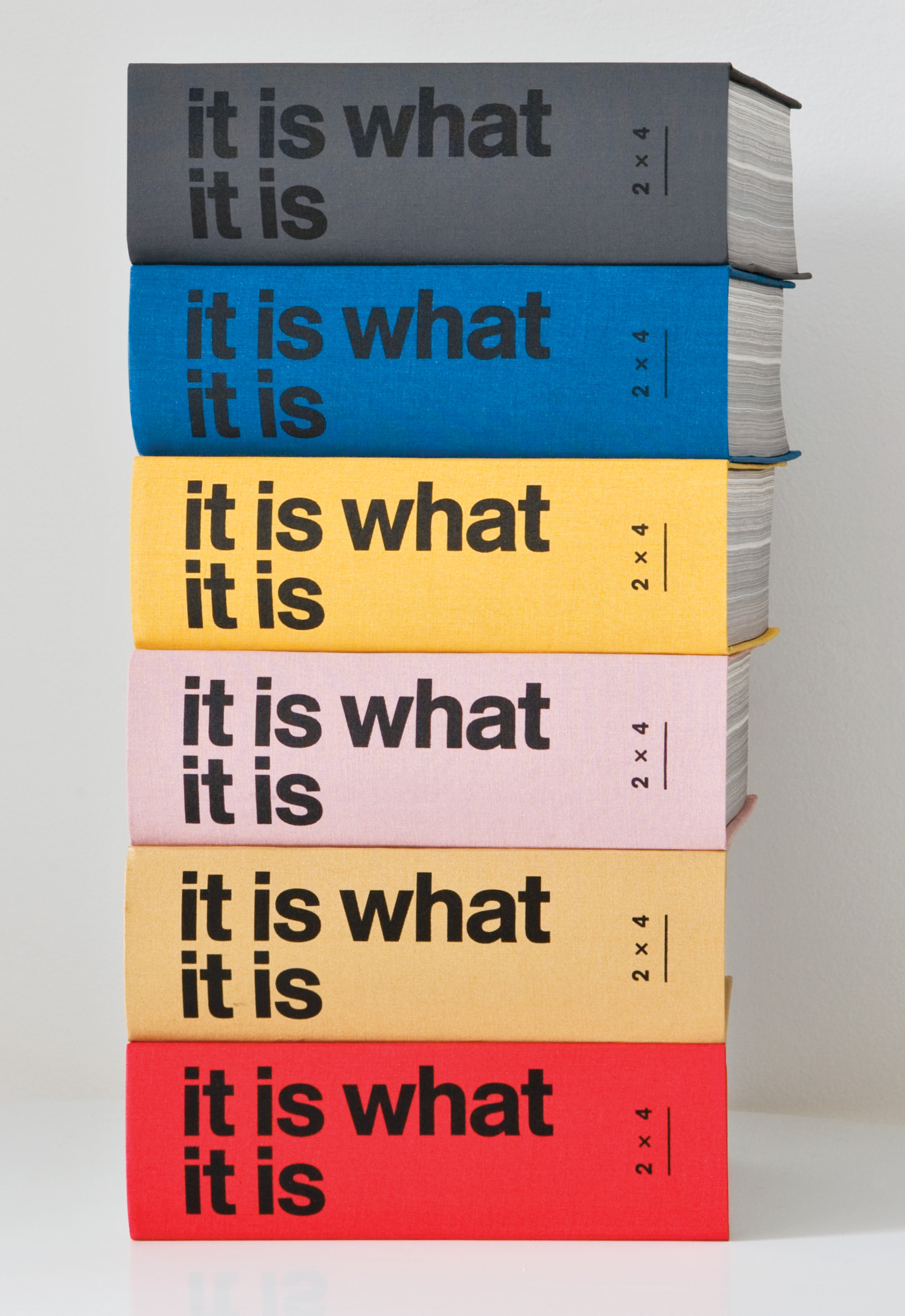
What’s your deliverable? It’s a common question, as crass as it is self-evident. We deliver Design … 24/7. But it’s a strange word — deliverable — with so many embedded assumptions. Someone else demands, requires, needs, wants, and ultimately pays (or doesn’t), but we always deliver. The verb makes sense; it’s the noun that’s the problem: what is this thing we are handing over?
On most business forms, Graphic Design is listed under Service Industries, so that much is clear: we deliver service. We service people, people in need of … design. Okay, so maybe it’s not so clear after all. Perhaps the problem is in the shifting definition of the design object. The material nature of the design object keeps slipping over the course of a project and from project to project, client to client, year to year, generation to generation.
A graphic-design project starts out as a relationship, transforms into a process of loose analysis and more or less insightful speculation, then enters into a practically autistic phase of visual generation, followed by a synthesis of speculation and experimentation that morphs into a purely computational and mechanical production — accomplished with or without the involvement of any number of outside trades — and finally emerges into the world through a complex of socialization and acculturation that includes publicity, public relations, distribution, retailing, advertising, focus testing, and criticism.
Some version of this process is applied to everything: from high art to low commerce, from the intellectual to the banal, from the edifying to the disingenuous. And the process may be interrupted at any point — in ways both positive and negative — by collaborators, authors, editors, clients, vendors, users, lawyers, censors, and politicians, all demanding modifications that range from the minor to the catastrophic. Add to the mix a studio comprised of thirty headstrong individuals engaged in multiple, overlapping projects — all utterly out of sync — concerning wildly different subjects, players, timelines, technologies, audiences, budgets and geographic locations. On top of that, designers have their own private agendas, ambitions, anxieties, compulsions, and references. Those agendas may mesh with the content at hand — and with the overarching, collective vision of the studio — or may be grafted onto content and live there parasitically. Personal vision is the designer’s value-added; it’s an indexical presence assumed so resilient it can survive in any context, from the base to the effete.
The compelling aspect of design is that each part of this messy process produces things, a constant stream of material pumping out of the studio. This superabundance defies any simple definition of the “object” (and any simple declaration of completion). Design can never be reduced to a direct process of transmission because the design object carries multiple messages: some overt, others sublimated, some literal, some haptic. And besides, the actual recipient of the communiqué is also opaque. It could be an imagined audience, an ideal audience, a peer, a studiomate, a passerby.
Design is always about creating a physical effect: it is both read and felt. Designers make things — deliverables — but these are not always the discrete things for which one gets paid. The simplest study can yield an idea, effect or emotion. Printing, binding, programming and building don’t necessarily have anything to do with it. A designer’s “things” happen at every stage of a design process; they are always finished and never finished. But the bigger project, the one that is never complete, is the one carried out over many projects and many years. It’s the project that demands persistent, diligent, never-quite-satisfying attempts. That’s the work, and the life, of the studio.
it is what it is is a blurry telling of a blurry story. It super-imposes diverse projects, scales, eras and voices onto a typical trajectory, starting from first contact and concluding with delivery into the world. It makes no attempt to segregate the polished from the in-process. Each thing is complete. Through rude juxtaposition it attempts to find an intuitive master narrative in a day-to-day process where clients come and go, the population of the studio is in constant flux, and projects fall into our lap or slip away without rhyme or reason.
It is not a book about what our work is about, but about the way that it is about it. From the ephemeral to the concrete, each page is drawn from a pastiche of projects: some finished, some dead in the water, some successful, some not. It includes sketches, models, prototypes, collages, animations, drawings and site photographs — the things we make every day. it is what it is tells the story of how we work, what we think about, and how what we think about becomes part of what we make.
Here ends the attempt to explain it, the rest is left to the things themselves. They are what they are.
Published in It is what it is
© Michael Rock